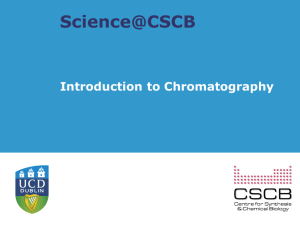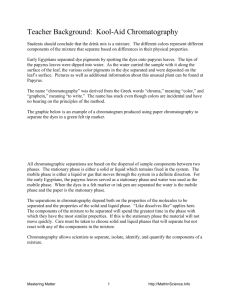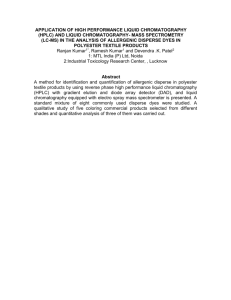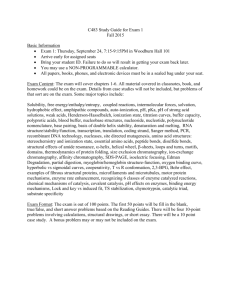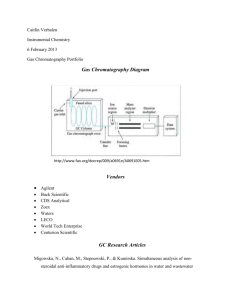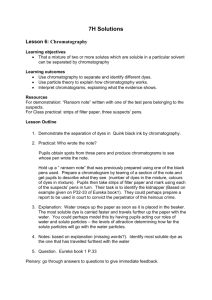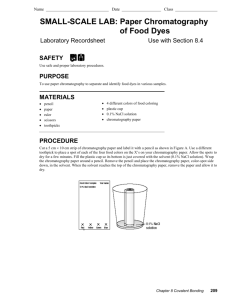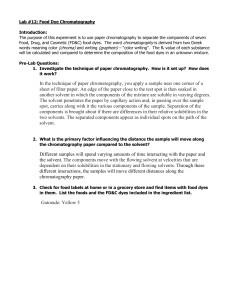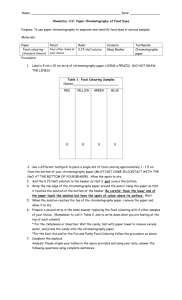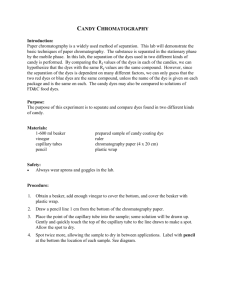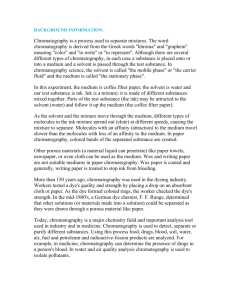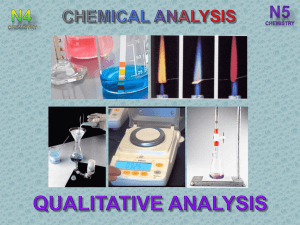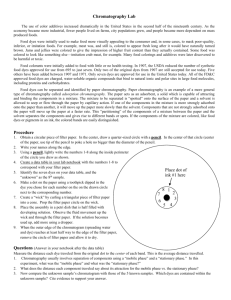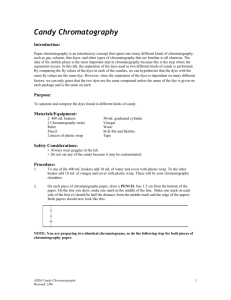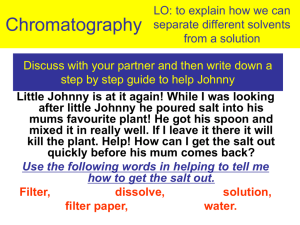chromatography - Montgomery County Schools
advertisement
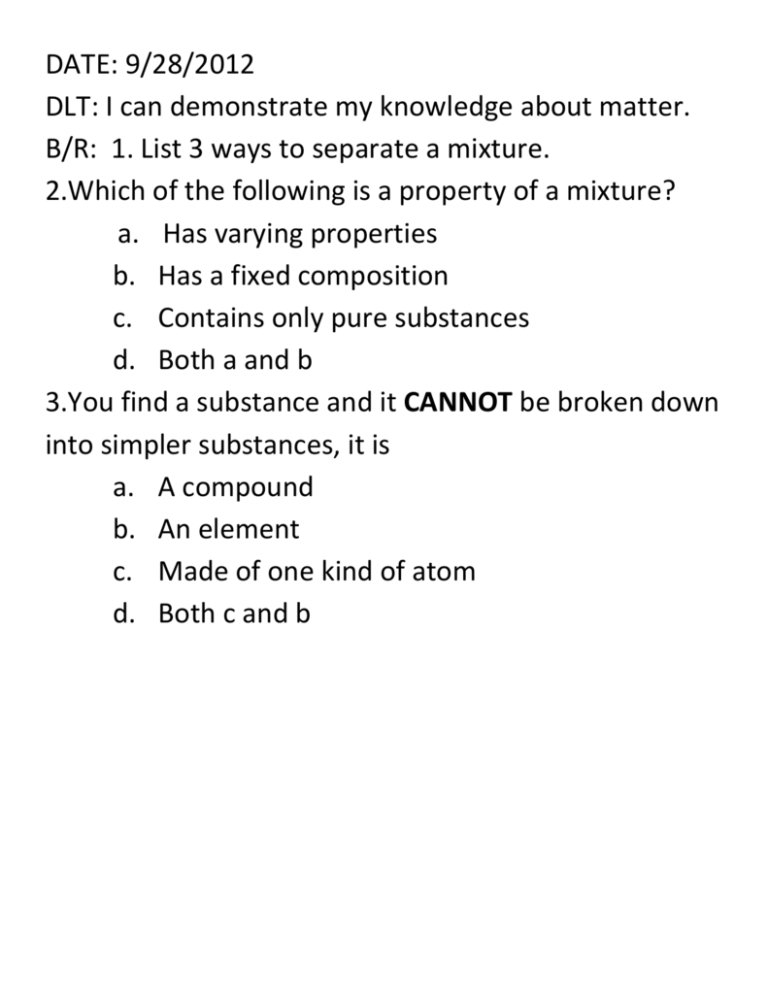
DATE: 9/28/2012 DLT: I can demonstrate my knowledge about matter. B/R: 1. List 3 ways to separate a mixture. 2.Which of the following is a property of a mixture? a. Has varying properties b. Has a fixed composition c. Contains only pure substances d. Both a and b 3.You find a substance and it CANNOT be broken down into simpler substances, it is a. A compound b. An element c. Made of one kind of atom d. Both c and b _ _ _ _ _ _ ___ X________________X________________X______________X_____________X____________ Candy green blue yellow red A student performs a chromatography experiment to identify the dye(s) present in a sample of candy. The student compares the results of this sample to the results obtained for pure samples of green, blue, yellow, and red dyes. Which statement best describes the dye content of the candy sample. A. It contains only blue dye. B. It contains only green dye. C. It contains both blue and yellow dyes D. It contains both green and yellow dyes. 2) A chemistry student finds a beaker in the laboratory containing a mixture of copper(II) sulfate and sand. The student add water to the beaker, and the solution turns blue. What technique would best separate the blue solutions from the sand? a. Chromatography b. distillation c. evaporation d. filtration chromatography- process of separating mixtures due to the different rates of solutes separating. 1) Other means or uses of chromatography. Bomb materials, leaves Flavors Scents Pollutants Drugs in urine solute vs. solvent Easter egg chromatography 2) What is black? 3) Can you think of a reason to use chromatography in forensic science? 4) How is it used as a forensic tool? 5) How does chromatography work? 6) Other means or uses of chromatography. Bomb materials, leaves Flavors Scents Pollutants Drugs in urine solute vs. solvent Easter egg chromatography

